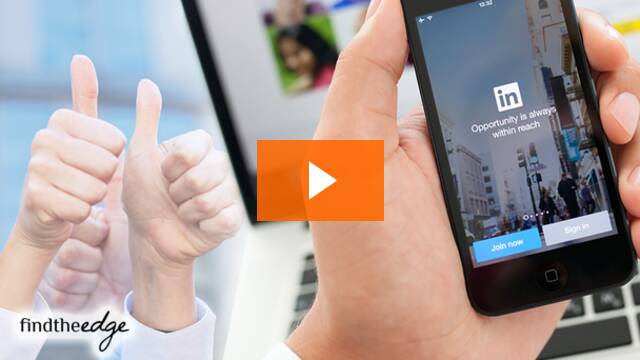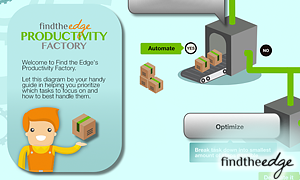Part 2: Linkedin publishing with Mark Williams
Should you be giving your valuable content to Linkedin or not? After revealing how to generate leads on Linkedin on the first in this Linkedin series, Mark Williams (AKA Mr Linkedin) is back to talk through the benefits and pitfalls of Linkedin Posts. And how to publish for maximum impact.
Podcast: Play in new window | Download | Subscribe on iTunes
Access Part 1: How to Generate Leads on Linkedin (Includes Genius Little Tool Preview)
Access Part 3: How To Post Super Engaging Linkedin Updates
Check out these 5 Free Tools to help you get more impact with your audience
Kenny: Welcome to this second show in the LinkedIn series with Mark Williams, where we’re going to be looking at published posts. Should you be giving your valuable content to LinkedIn or not and what are the benefits of doing that?
So again, thank you so much for giving us your valuable time to come in and show us more of your LinkedIn magic. Today, what I’d like to cover is these published posts and any kind of updates that we do on LinkedIn, because I think it’s all a little bit different to how Facebook works for instance. So welcome to the show, Mark.
Mark: Thank you very much. I’m not getting lunch this time, Kenny. I feel like I’ve been a bit hard done by this time.
Kenny: You are actually in your house, aren’t you, so I’ll see what I can send over to you.
Mark: Yeah.
Kenny: Yeah. I know one of your favorites is a bit of gin, so we’ll send you a bottle of gin for all your time helping us out here.
Mark: Sounds good, as long as it’s decent gin though.
Kenny: Yeah.
Mark: Alright, yeah, so publishing, interesting isn’t it? LinkedIn has really kind of had a step change in direction with LinkedIn publishing. They did this a couple of years ago, to be honest. They started with what they call Influences, and if I had a pound or a dollar for every person that asked me how they could become an influence, I’ll be a rich man by now.
The answer to that question, in case anybody’s asking, is you can’t I’m afraid, unless you’re somebody very, very famous and considered to be very influential. In the early days, they actually allowed people to apply to be influences and there are a few there who I think probably these days wouldn’t have a chance of getting in. It’s a closed window, unless actually – it’s a small point, but if you speak in French and German, they are opening up the platform to French and German speakers and it may well be that they are at the stage where they are interested in influences whose native tongue is French or German. So it might be a possibility there.
But I’m sure a majority of people listed to this are English-speaking ,in which case, you haven’t got a hope unless you’re someone like Sir Alex Ferguson who recently just become an influence around LinkedIn.
Kenny: Fantastic. Who’s this chap with the arrow on his head, by the way?
Mark: On my screen, he hasn’t got an arrow on his head actually. Is it my mouse or something?
Kenny: We can see your mouse. We’re supposed to be on publishing now.
Mark: Is it right? Okay, I’ll move it right off. I can’t see that on my end. It’s not a tattoo on his head or anything.
This is just a random example, to be honest with you, but I like to show it to people because people have this perception that to be a publisher on LinkedIn, then either you have to be a bona fide author or proper, professional blogger, or an influencer. You don’t.
And also, the other thing about this is that the biggest excuse people give me about publishing is that, I don’t have time for that. I don’t have time to start writing massive, long articles and all that stuff. I’ve got a job to do. I’m sorry, but there are plenty of people out there with pretty big, busy jobs, who are managing to do it and they do it because they realize that it’s a very important medium and a real opportunity to reach a wider audience than perhaps you would be able to any either way.
What I’ve been absolutely gobsmacked about with publishing is the take-off. There’s over a million people now actually publishing their own blogs, in effect, on LinkedIn. That’s just amazing and what they’ve really done, I think, is made blogging something that people like this who work in big corporates can do. People like that have never really blogged or just the old one here and there. But it’s mainly people like us, isn’t it, business owners looking to get their message out there, builds a following and the rest of it.
Whereas now LinkedIn is saying, hold on a second, anybody can blog and you can do it on the world’s largest business networking platform so that you’ve got the potential for a massive audience. It’s just interesting how that has changed and how many people have taken up on it.
People and possibly the audience here, you might be thinking, I already blog and why would I want to do it on LinkedIn? That’s what I really want to cover in this particular episode because I think that’s an interesting challenge, because we can see people in corporates doing it. Should we be doing it ourselves? Is it a relevant medium for us to be getting our message out there?
The answer to that, I think obviously, is yes. But I want to go into a bit more detail as to why I think it’s a yes and go through the advantages, and also the disadvantages of putting your material, your content out on LinkedIn via a published post or indeed a status update, which I will come onto as well.
Kenny: Great stuff. I will interject with a few questions, if that’s okay.
Mark: Yeah, if you can stop me. Good luck.
Kenny: Stop you rambling on.
Mark: Yeah, exactly, as I have been known to from time-to-time. So yeah, over a million people are publishing and to say it’s all English. They’ve just opened it to Portuguese and soon opening it to French and German. But there’s a lot of people out there that are publishing.
One of the first things I would say in terms of advantages of publishing is, if you can see here, it sits at the top of your profile. So when somebody comes to your profile, one of the first things they’re going to see is your last 3 posts on LinkedIn.
Now if we can find that with what we were talking about last time, and things like Autopilot where you are visiting hundreds of profiles a day and getting a 20% view back rate, then you’ve got to realize that obviously you’re potentially bringing a lot of people to your profile, who then will see your posts.
So you can see how that all kind of links together. It’s an important that they sit there right at the top of your profile and therefore, are likely to get attention from people and they can then potentially click on them and read them.
In addition to that, publishing a post on LinkedIn – and by the way, the way you do it quite simply is if you think right at the very top of your homepage, when you’re on your homepage, you have these 3 things: share an update, upload a photo and publish a post. The one on the right-hand side, Publish a post, all you do is click on that and then it’s a fairly straightforward format. You upload a picture. You write your article and then you go.
It’s a long-form post so it’s typical of a blog post, 500 to 1,000 words is probably a good length. There is an argument that says actually the editors on Pulse, which I’ll come onto in a second, prefer something slightly longer as well, so maybe even 1,000 to 2,000 words can be appropriate as well.
That alludes to the other advantage. The other advantage of publishing a post is as well as the fact that it sits in your profile and your first 2 connections will be notified that you’ve done that post, but in addition to that, there is a possibility that you could attract a wider audience because it could end up in what’s called a Pulse channel.
Now Pulse is the newsfeed on LinkedIn. The newsfeed on LinkedIn has channels around specific subjects. I’ll come onto and show those in a little bit more detail in a second but an advantage of publishing a post is provided it’s sufficiently optimized in the right way, which is about keywords and tagging – you’re allowed to tag a post with up to 3 tags. If you tag it in the right way and also optimize it with the right keywords especially in the headline, the algorithm may well pick it up as being appropriate to a certain channel. And then the editor of that channel, I think some of these channels are very big. They have tens and millions of followers. So they have a number of editors, but these are real people that actually read your post and decide whether they think it’s appropriate for the channel.
Provided those two things happen, then you’re reaching a potentially much wider audience because as I said, people follow channels and you have millions of millions, I mean an average channel might have 5 to 10 million followers. There are channels with much higher numbers than that. These are people that you’re not connected to, not necessarily anyway, and all around the world.
So when we think about blogging on LinkedIn, we need to think about it in the context of this potentially has much greater reach than I’m ever going to achieve with my own blog.
Kenny: Yeah. So at this point Mark, the benefits of this are obviously we can see that these published posts go there. They possibly go on these channels. Within those published posts, you can have obviously links to your own websites, so again driving traffic to your own website. But also you can follow people, can’t you, on LinkedIn as well, which is not the same as connecting with them, is it?
Mark: No. So it’s a bit of a combination of Twitter and LinkedIn in that regard. You can choose to follow somebody without connecting to them and they can’t stop you following them. So it’s a pretty similar concept, really, yeah, absolutely. I wouldn’t say that that many people have really understood that.
So if you typically look at most people, the majority of their followers are actually connections. Some people, certainly the influencers you can’t connect to influencers, not very easily. So a majority of their followers are actually real followers.
But like this guy that we’re looking at, he would probably attract connections more than he would followers. But you are right, that is a definite feature and a possibility as well.
Kenny: Yeah, because I noticed you have about 6,000 followers. So do you think people decided to follow you because of your published posts?
Mark: Maybe published posts, but when you follow somebody, you also see their status updates as well. So it’s not just about that. They would also see status updates and I probably do more status updates than I do published posts. I mean that’s a possibility.
The vast majority of those 6,000 followers are connections. I think 5,800 connections, roughly, something like that.
Kenny: If you hear a weird noise in a minute, it just so happens that my gardener has decided to come at the exact time that I decide to do my one podcast I’ve done in the last 6 months at home.
Mark: You’re showing off now. He’s got a gardener. Next minute, it’ll be the cleaner comes in. You’ll be dropping that on into the conversation as well. We know what your game is.
Anyway, so moving on, you’re right though. I’m glad you mentioned the fact that you can put links in it. We need to think about this because when publishing, first I kind of thought this looks amazing. It’s a fantastic opportunity. But then you start thinking about, hold on a second, this is breaking the rules of marketing on the internet in the sense that you’re trying to build a following, the thing they always say to you, don’t they, is don’t build your house on rented land. Don’t put your material on somebody else’s website.
Now obviously this guest blogging thing is a slightly different thing. But actually, the conclusion that I’ve come to is the way you should see publishing on LinkedIn is kind of a bit like guest blogging. So you’re tapping into a different audience and you want to make sure that whatever you publish, that you fill it with links back to your website because your objective is to get people back to your website.
Kenny: Yeah. I’ve noticed a lot of big guest posters, so for example, let’s use James Clear at jamesclear.com who does a lot of guest blogging around productivity, really great person to follow actually. I’ve noticed that he will post on his site and then will do almost an identical post on entrepreneur.com. He will repurpose that information on entrepreneur.com. It’s usually slightly re-tweaked and stuff so that it is fairly unique content. But it’s the same material.
Are you saying this is similar? You can repurpose your content on here?
Mark: Kind of. I mean you have to be a bit careful about that, don’t you, in terms of repurposing. You have to change it a bit because Google doesn’t like it if you just repeat it.
Kenny: Yeah.
Continue to Next Page






